We present here three workshops showing how to come close to a given sound taken from several music styles.
Although it is impossible to reproduce exactly the original recording, we show how Pianoteq makes it possible to capture its colour, its atmosphere.
Rather than going into all the details, we concentrate here on the main stages, the most important being the order in which the settings are applied.
The changes in global settings need Pianoteq Standard while the note per note changes need Pianoteq PRO.
This workshop was prepared with the D4 from Pianoteq version 4, but of course the same technique can be applied to other pianos.
Important: in order to capture the finest nuances, a good audio setup is needed to listen to the following examples.
Workshop showing how to come close to a given sound taken from Jazz music.
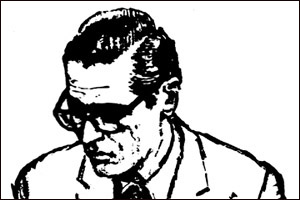 Target recording
MIDI file
Target recording
MIDI file
This is the recording we want to simulate. For copyright reasons, we present here only a short excerpt which is enough for our purpose. Note the beautiful 'singing' quality of the unisons, as well as the nice sustain pedal resonance.
 Choosing a preset
FXP
Choosing a preset
FXP
The first thing to do is to select the preset that will serve as starting point. We choose here the D4 Jazz AB preset.
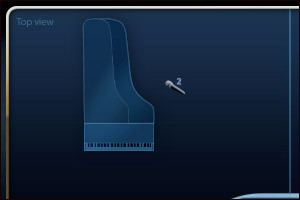 Microphone setting and reverberation
FXP
Microphone setting and reverberation
FXP
We start with microphone position. The original recording is (almost) mono. We don't want a 100% mono sound (we want some 'air' when listening with headphones) but we want it to be close to the original, so we choose to put two microphones just a few centimetres/inches away from each other and close to the piano. We select the Small Hall reverberation.
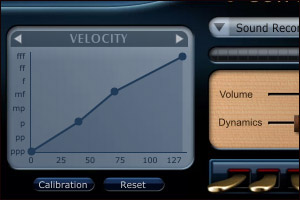 Velocity
FXP
Velocity
FXP
Next, let us adjust velocity, dynamics and volume so that the MIDI file we have at our disposal shows a similar soundscape as the target recording. We don't care here for the difference in performance, we are just trying to catch the atmosphere.
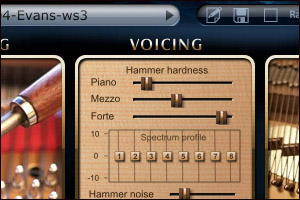 EQ and hammer hardness
FXP
EQ and hammer hardness
FXP
We now adjust equalizer and hammer hardness. We want a crisper sound, so we increase the hammer hardness.
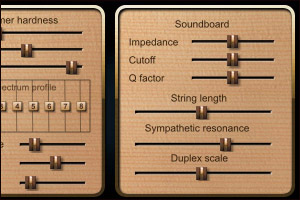 Sympathetic resonances
FXP
Sympathetic resonances
FXP
The original recording clearly shows a lot of resonances, so we do not hesitate in increasing the sympathetic resonances by a factor 2. Time to notice the resonances in action during the typical repedalling on the two sustained chords at the beginning.
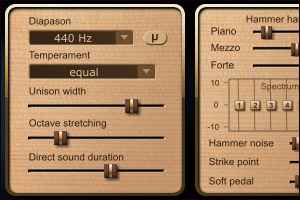 Tuning and hammer noise
FXP
Tuning and hammer noise
FXP
We increase the unison width parameter by a factor 2 to obtain the same 'singing' unisons as we can hear in the original recording. We also increase slightly the direct sound duration and reduce the hammer noise.
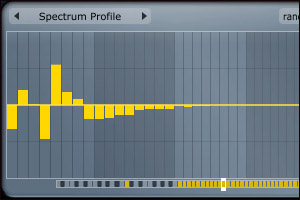 Voicing
FXP
Voicing
FXP
We now leave the global settings and work on the final voicing by adjusting a few overtones for a couple of notes, as for example the first note Bb1.







